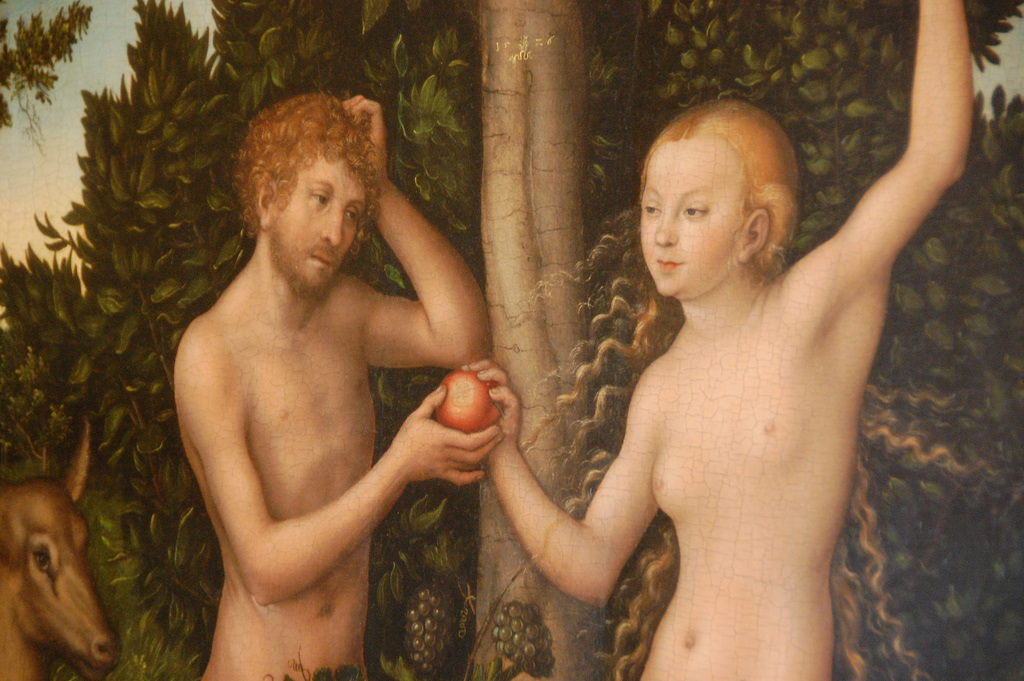Between Stockholm Syndrome and Lima Syndrome
Part 26: Mob Mentality and Groupthink

All truths passes through three stages.
First, it is ridiculed.
Second, it is violently opposed.
Third, it is accepted as self-evident.
-ARTHUR SCHOPENHAUER (1788-1860)
Why do people not only believe in, but ready to kill others and even die for, bizarre and outrageous lies, including dubious fatwas, Nazi and communist propaganda, pseudo-science, disinformation, and religious claims? Why would millions of believers cling to every single word of a prophet who was functionally illiterate, yet claimed he was appointed to translate God's will? Consider those who had believed, or still believe, in alien abductions, ghosts, ESP, the Noah's Ark, astrology, racial superiority, superstition, snake oil salesmen, and Elvis sightings for which there is scanty or no evidence whatsoever. In Ottawa (Canada), for example, three Elvis aficionados who pretty much believe the "King" is still alive—in spite of police, press, and the coroner's reports—established The Elvis Sighting Society.
Then, on the other hand, there are also those who disbelieve and flatly deny Darwin's theory of evolution by natural selection, the Holocaust, the Out Of Africa theory, and climate change in spite of the preponderance of empirical evidence. (I cannot resist the temptation to ask why do people who deny Darwin's theory of evolution are the very same group who audaciously practice Social Darwinism, but let's explore this in another post.) In short, why do people believe or disbelieve?
There are no simple and direct answers, but a dominant psychobiological factor is the knee-jerk reflex to imitate others mindlessly. Among humans, the strong drive to imitate is best explained by English zoologist and evolutionary-anthropologist Desmond Morris (b. 1928): "As a species we are strongly imitative and it is impossible for a healthy individual to grow up and live in a community without becoming infected with its typical-action patterns. The way we walk and stand, laugh and grimace, are all subject to this influence."
Social scientists called this phenomenon social proof a.k.a. herd instinct a.k.a. mob mentality in which individuals feel they behave correctly if other people act in the same way. There is safety in numbers. Quantity brings security. The more, the merrier. As expected, peer pressure to conform with others distorts humans' most valuable asset: common sense. Almost similar to herd instinct is groupthink, which occurs when otherwise intelligent and highly educated people make decisions and choices solely to align their opinions with the expected consensus. Or the Boss, for that matter. Many political pundits are convinced that American decision to invade Iraq in 2003 (based on faulty intelligence and the lack of an Exit Strategy) is a textbook case study of groupthink.
Social proof or groupthink itself is not necessarily bad, as throughout the evolutionary process it has served Homo sapiens quite well as a survival strategy (including but not limited to political survival). The following anecdote from the days of the Soviet Union illustrates how groupthink works:
The First Secretary of the central Committee of the Communist Party Nikita Khrushchev (1894-1971) was busy denouncing his predecessor Joseph Stalin (1878-1953) at a public meeting when a voice shouted out:
-"If you feel this way now, why didn’t you say so then?” To which the Soviet leader thundered: +“Who said that?”
There was a long and petrified silence, which Khrushchev finally broke:
+“Now you know why.”
Indeed herd instinct or mob mentality has also sparked chauvinism, repeated stock market panics, McCarthyism, the French Revolution’s Reign of Terror, the Salem Witch Trials, the Holocaust, Jim Crow laws, and religious persecutions all over the world. Only within the last 100 years, countless genocides have been sparked by mob mentality; including but not limited to the Armenian and Assyrian genocide (1915-1923); the Holocaust (1933-1945) as illustrated in The Pianist (2002), Holocaust mini-series (1978), Sophie's Choice (1982), Schindler's List (1993), The Diary of Anne Frank (1959) films; the Cambodian genocide (1975-1979) as illustrated in The Killing Fields (1984) film; the Indonesian "G30S Movement/PKI" genocide (1965-1966) as illustrated in The Act of Killing (2012) and The Look of Silence (2014) films; the Rwandan genocide (1994) as illustrated in Hotel Rwanda (2004) film; and the Srebrenica massacre (1995) as illustrated in Srebrenica: A Town Betrayed (2011) documentary.
Even seemingly innocent sporting events have turned deadly because of mob mentality—directly and indirectly. In 2015, for example, Egypt sentenced 21 soccer fans to death after they incited a 2012 stadium riot that killed 74 and injured 1,000 mostly from trampling and falling from stadium balconies. If that's not tragic enough, the verdict itself sparked another riot, which left at least 30 dead and over 400 injured. As pointed out by Daniel Wann, a leading sport psychologist at Murray State University: "The similarities between sport fandom and organized religion are striking. Consider the vocabulary associated with both: faith, devotion, worship, ritual, dedication, sacrifice, commitment, spirit, prayer, suffering, festival, and celebration." Indeed, throughout the first 200 years of ancient Olympic games (as opposed to the modern ones founded by Baron Pierre de Coubertin in 1894), they only had religious significance to honor a Greek god named Zeus.
[To be continued.]
Johannes Tan, Indonesian Translator & Conference Interpreter
First, it is ridiculed.
Second, it is violently opposed.
Third, it is accepted as self-evident.
-ARTHUR SCHOPENHAUER (1788-1860)
Why do people not only believe in, but ready to kill others and even die for, bizarre and outrageous lies, including dubious fatwas, Nazi and communist propaganda, pseudo-science, disinformation, and religious claims? Why would millions of believers cling to every single word of a prophet who was functionally illiterate, yet claimed he was appointed to translate God's will? Consider those who had believed, or still believe, in alien abductions, ghosts, ESP, the Noah's Ark, astrology, racial superiority, superstition, snake oil salesmen, and Elvis sightings for which there is scanty or no evidence whatsoever. In Ottawa (Canada), for example, three Elvis aficionados who pretty much believe the "King" is still alive—in spite of police, press, and the coroner's reports—established The Elvis Sighting Society.
Then, on the other hand, there are also those who disbelieve and flatly deny Darwin's theory of evolution by natural selection, the Holocaust, the Out Of Africa theory, and climate change in spite of the preponderance of empirical evidence. (I cannot resist the temptation to ask why do people who deny Darwin's theory of evolution are the very same group who audaciously practice Social Darwinism, but let's explore this in another post.) In short, why do people believe or disbelieve?
There are no simple and direct answers, but a dominant psychobiological factor is the knee-jerk reflex to imitate others mindlessly. Among humans, the strong drive to imitate is best explained by English zoologist and evolutionary-anthropologist Desmond Morris (b. 1928): "As a species we are strongly imitative and it is impossible for a healthy individual to grow up and live in a community without becoming infected with its typical-action patterns. The way we walk and stand, laugh and grimace, are all subject to this influence."
Social scientists called this phenomenon social proof a.k.a. herd instinct a.k.a. mob mentality in which individuals feel they behave correctly if other people act in the same way. There is safety in numbers. Quantity brings security. The more, the merrier. As expected, peer pressure to conform with others distorts humans' most valuable asset: common sense. Almost similar to herd instinct is groupthink, which occurs when otherwise intelligent and highly educated people make decisions and choices solely to align their opinions with the expected consensus. Or the Boss, for that matter. Many political pundits are convinced that American decision to invade Iraq in 2003 (based on faulty intelligence and the lack of an Exit Strategy) is a textbook case study of groupthink.
Social proof or groupthink itself is not necessarily bad, as throughout the evolutionary process it has served Homo sapiens quite well as a survival strategy (including but not limited to political survival). The following anecdote from the days of the Soviet Union illustrates how groupthink works:
The First Secretary of the central Committee of the Communist Party Nikita Khrushchev (1894-1971) was busy denouncing his predecessor Joseph Stalin (1878-1953) at a public meeting when a voice shouted out:
-"If you feel this way now, why didn’t you say so then?” To which the Soviet leader thundered: +“Who said that?”
There was a long and petrified silence, which Khrushchev finally broke:
+“Now you know why.”
Indeed herd instinct or mob mentality has also sparked chauvinism, repeated stock market panics, McCarthyism, the French Revolution’s Reign of Terror, the Salem Witch Trials, the Holocaust, Jim Crow laws, and religious persecutions all over the world. Only within the last 100 years, countless genocides have been sparked by mob mentality; including but not limited to the Armenian and Assyrian genocide (1915-1923); the Holocaust (1933-1945) as illustrated in The Pianist (2002), Holocaust mini-series (1978), Sophie's Choice (1982), Schindler's List (1993), The Diary of Anne Frank (1959) films; the Cambodian genocide (1975-1979) as illustrated in The Killing Fields (1984) film; the Indonesian "G30S Movement/PKI" genocide (1965-1966) as illustrated in The Act of Killing (2012) and The Look of Silence (2014) films; the Rwandan genocide (1994) as illustrated in Hotel Rwanda (2004) film; and the Srebrenica massacre (1995) as illustrated in Srebrenica: A Town Betrayed (2011) documentary.
Even seemingly innocent sporting events have turned deadly because of mob mentality—directly and indirectly. In 2015, for example, Egypt sentenced 21 soccer fans to death after they incited a 2012 stadium riot that killed 74 and injured 1,000 mostly from trampling and falling from stadium balconies. If that's not tragic enough, the verdict itself sparked another riot, which left at least 30 dead and over 400 injured. As pointed out by Daniel Wann, a leading sport psychologist at Murray State University: "The similarities between sport fandom and organized religion are striking. Consider the vocabulary associated with both: faith, devotion, worship, ritual, dedication, sacrifice, commitment, spirit, prayer, suffering, festival, and celebration." Indeed, throughout the first 200 years of ancient Olympic games (as opposed to the modern ones founded by Baron Pierre de Coubertin in 1894), they only had religious significance to honor a Greek god named Zeus.
[To be continued.]
Johannes Tan, Indonesian Translator & Conference Interpreter




 RSS Feed
RSS Feed